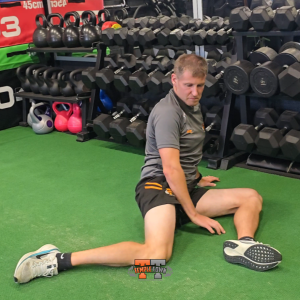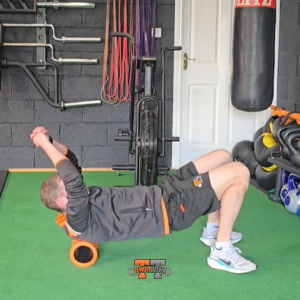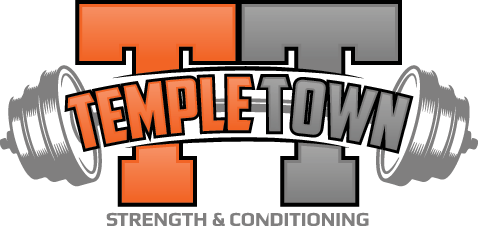Movement vs. Mobility: Unlocking Your Hips and Upper Back for Lasting Back Pain Relief
If you have ever bent over to tie your shoes and thought, “When did I become this stiff?”, you are not alone. Many people in their 30s, 40s and 50s assume their back pain is caused by age, bad luck or “wear and tear”.
Here is the truth: most flare-ups are not about a broken or fragile spine. They happen because the joints above and below your lower back (your hips and your thoracic spine) have stopped pulling their weight. When your hips and upper back stiffen up, your lower back is forced to pick up the slack. That is when pain shows up.
In this blog you will discover:
-
- What mobility and movement mean and why they matter for pain relief
- Simple self-tests to spot your weak links
- Mobility drills that work without wasting time
- Lock-it-in movements that create lasting change
- A realistic 10-minute plan busy professionals can use daily
Mobility vs movement in plain English
Mobility is the usable range of a joint, like how far a door hinge can open. Movement is how you control that range under load.Here is the mistake: people hammer stretches that do not stick, or unlock range without retraining their movement.
That is like loosening a hinge without oiling it. It stiffens right back up.Your hips and thoracic spine are the hinges. Your lumbar spine is the panel between them. Free up those hinges and your spine stops carrying everyone else’s load.
Self-tests: where are you stuck?
Try these at home:

Hips
90-90 position: Struggling to keep your back-leg shin flat means limited hip internal rotationHalf-kneeling hip flexor stretch: If you feel it in your back instead of your hip, your hip flexors are tight
Thoracic spine
Seated rotation: Can you rotate past 45° each way without your ribs flaring?Wall shoulder flexion: If your ribs pop or your low back arches, you are missing extension.
If you fail these tests, you have found your weak links.
Mobility drills that work
Forget random stretching. Use these targeted drills.
For hips
- 90-90 transitions: 2 x 6
- Half-kneeling hip flexor stretch: 3 x 30 seconds
- Adductor rockbacks: 2 x 8
- Hip CARs: 3 slow circles each way
For thoracic spine
-
- Open books: 2 x 6 each side
- Quadruped rotations: 2 x 6 each side
- Foam roller extensions: 2 x 6

Do not just mobilise… Train it!
Mobility without training is like loosening the hinge without using the door. You must teach your body the new range is safe.
Try these:
- Hip hinge with a dowel: 2 x 8
- Goblet squat to a box: 3 x 6
- Farmer or suitcase carries: 3 x 20 to 30 metres
- McGill’s Big 3 (curl-up, side plank, bird dog): 1 to 2 rounds

This is how you make changes stick.
The 10-minute daily plan
Busy schedule. Simple structure.
- 2 minutes: self-tests
- 6 minutes: one hip drill plus one thoracic drill
- 2 minutes: hinge pattern or carry
Do this 4 to 5 times per week and your back will thank you.
When to progress without flare-ups
Change one thing at a time. Load, range or speed. Never all three. Build confidence gradually.
The bottom line
Back pain does not mean you are broken. It often means your hips and upper back are stiff, which forces your lower back to overwork. Free up the right areas and your back can finally breathe.
Listen to Episode 10: Movement vs. MobilityUnlocking Your Hips and Thoracic Spine for Back Pain Relief
Ready for a personalised plan?
If this makes sense but you want a tailored approach, that is exactly what I do inside BackFix Coaching.
It is my complete 5-Pillar System for men and women in their 30s to 50s who want to:
-
- Train confidently without flare-ups
- Get stronger and lose belly fat
- Build long-term resilience rather than short-term relief
Email info@templetownsc.com or DM STRONG on Instagram @TempletownStrengthConditioning to apply.
You did not work this hard in life to spend the next 20 years afraid of your own body.
You deserve to lift again, live again, stronger than pain.

